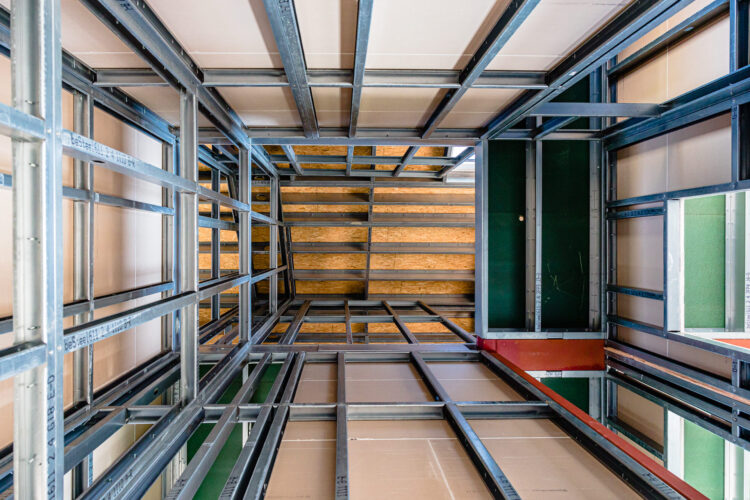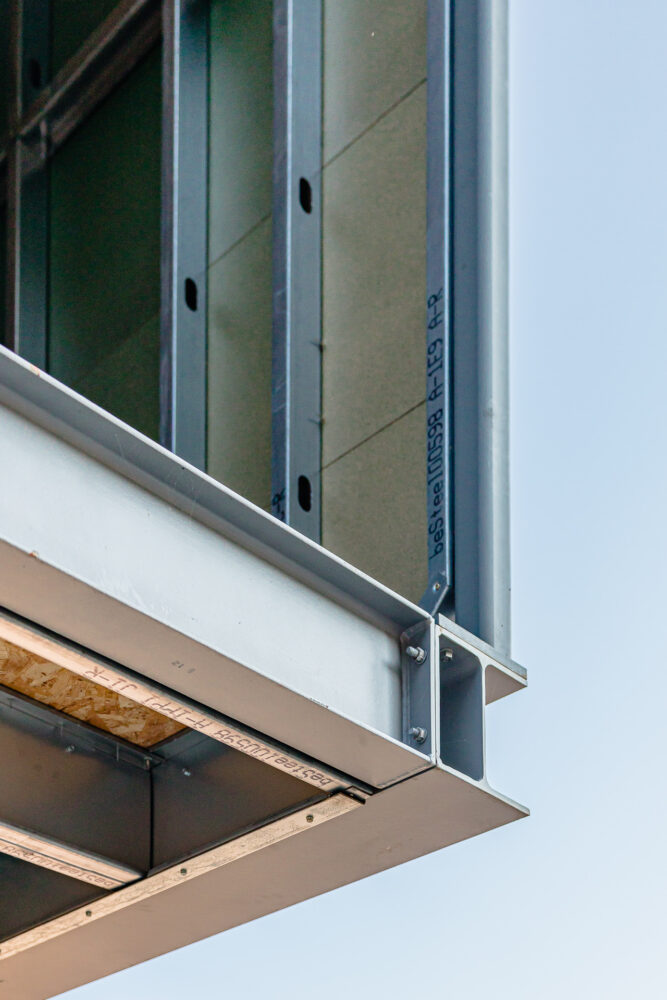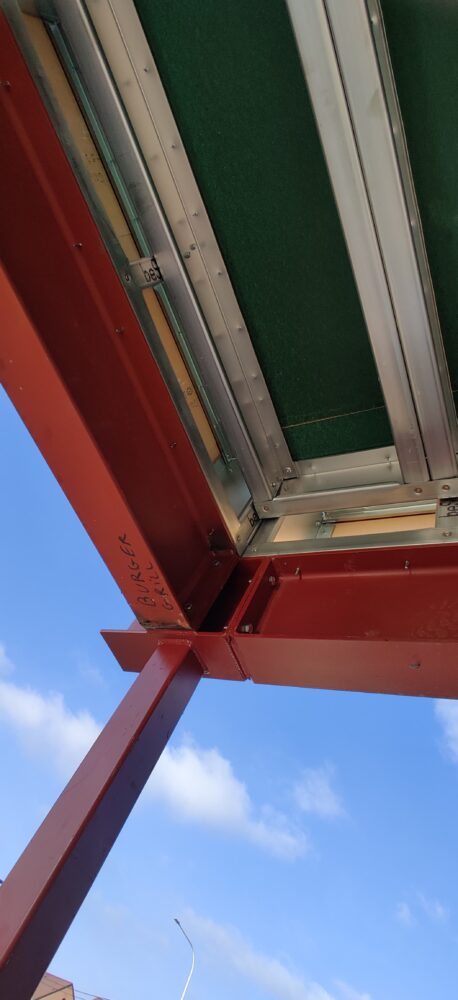At beSteel, we’re convinced that light steel-frame construction represents a revolution compared to traditional methods. We design and produce our cold-rolled steel profiles. These enable us to develop a method that combines effective external insulation with a beautiful exterior appearance. Steel frame becomes your insulation ally.
What makes steel frame your insulation ally?

What are the advantages of steel frame for your insulation?
Choosing a lightweight steel frame from beSteel for your construction or your renovation project gives you excellent insulation values and superior living comfort.
1. Thinner walls with light steel frame
The thickness of the beSteel profiles varies from 50 mm to 250 mm; combined with insulation, façade finishing and cladding, it is possible to obtain walls of a considerably lower thickness than with a traditional construction. This innovation increases the net habitable living area and results in a financial advantage.
“This is one of the reasons many real estate developers choose a lightweight steel frame. Reducing the thickness of the walls means you get more square metres of living space. This is a very valuable advantage if you know the m² price in cities such as Brussels, Antwerp, Paris, etc.”, says Hélène de Troostembergh, CEO at beSteel.
2. A reduction in internal condensation
In a steel frame beSteel construction, thermal insulation is used on the outside, which is combined with acoustic insulation between the profiles. This is slightly different to timber frame construction. Because the steel frame is on the warm side of the insulation, the risk of internal condensation is minimal. In order to further increase the performance of the wall, an additional air and/or moisture barrier can be installed. The position of the barriers depends on the thickness of the insulation. The choice of materials and type of membrane avoids the risk of internal condensation.
This guarantees a healthy indoor climate with lower energy costs for the user.
3. No thermal bridges
Comparative tests show that the same thermal performance can be achieved with thinner walls.
Combined with the right materials, a steel frame construction offers high-quality thermal insulation. Any cold bridges are completely eliminated by the external thermal insulation. This construction method ensures there are no thermal bridges, which means it can also be used for passive construction.
What types of insulation should be used with metal framing?
1. EPB requirements
The thermal insulation of your steel frame home ensures as little heat is lost through the walls, roof or floor as possible. The extent to which your home must be insulated is regulated in Belgium by the EPB regulations. There are three pillars:
- Thermal insulation: K, U and R values
- Energy advantages: E-value, net energy and renewable energy
- Indoor climate: ventilation and overheating
2. Steel framing is your insulation ally.
It allows freedom of creation and design. There are many directions the appearance of your home can take, taking local building regulations into account. From a traditional facing brick to more contemporary metal casings, as well as rendering and even wood facades… anything is possible with a steel frame.
A layer of “soft” insulating material, such as glass wool, mineral wool or the more ecological version of wood wool, is used between the profiles. This ensures excellent acoustic performance, as well as contributes to the thermal insulation of the walls. Insulation panels such as PUR, EPS, PIR, XPS and wood fibre are used on the outside of the beSteel structure.

Building like never before
This technology enables us to build better constructions that combine today’s needs, the advantages of steel framing and beSteel’s expertise.




